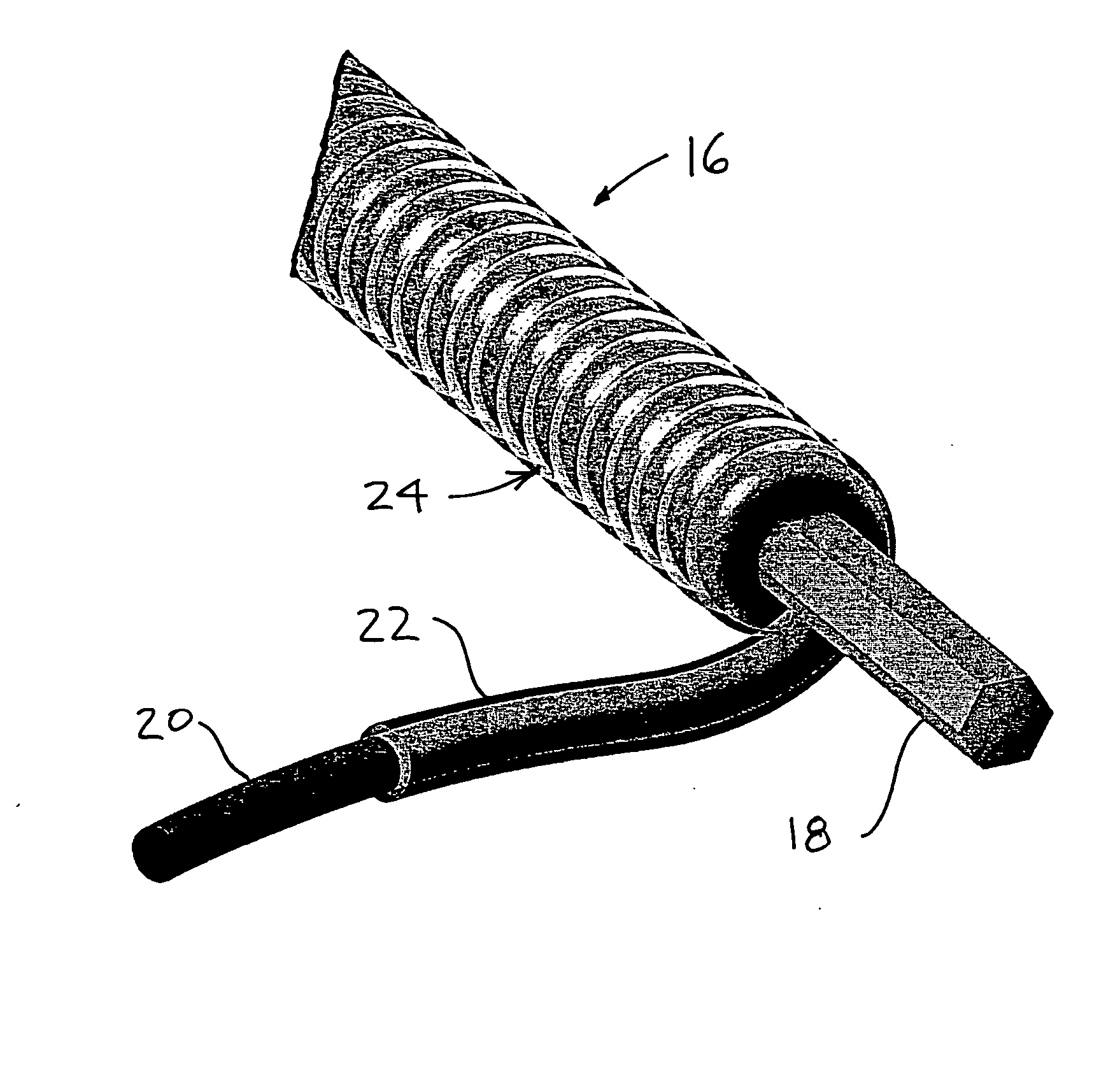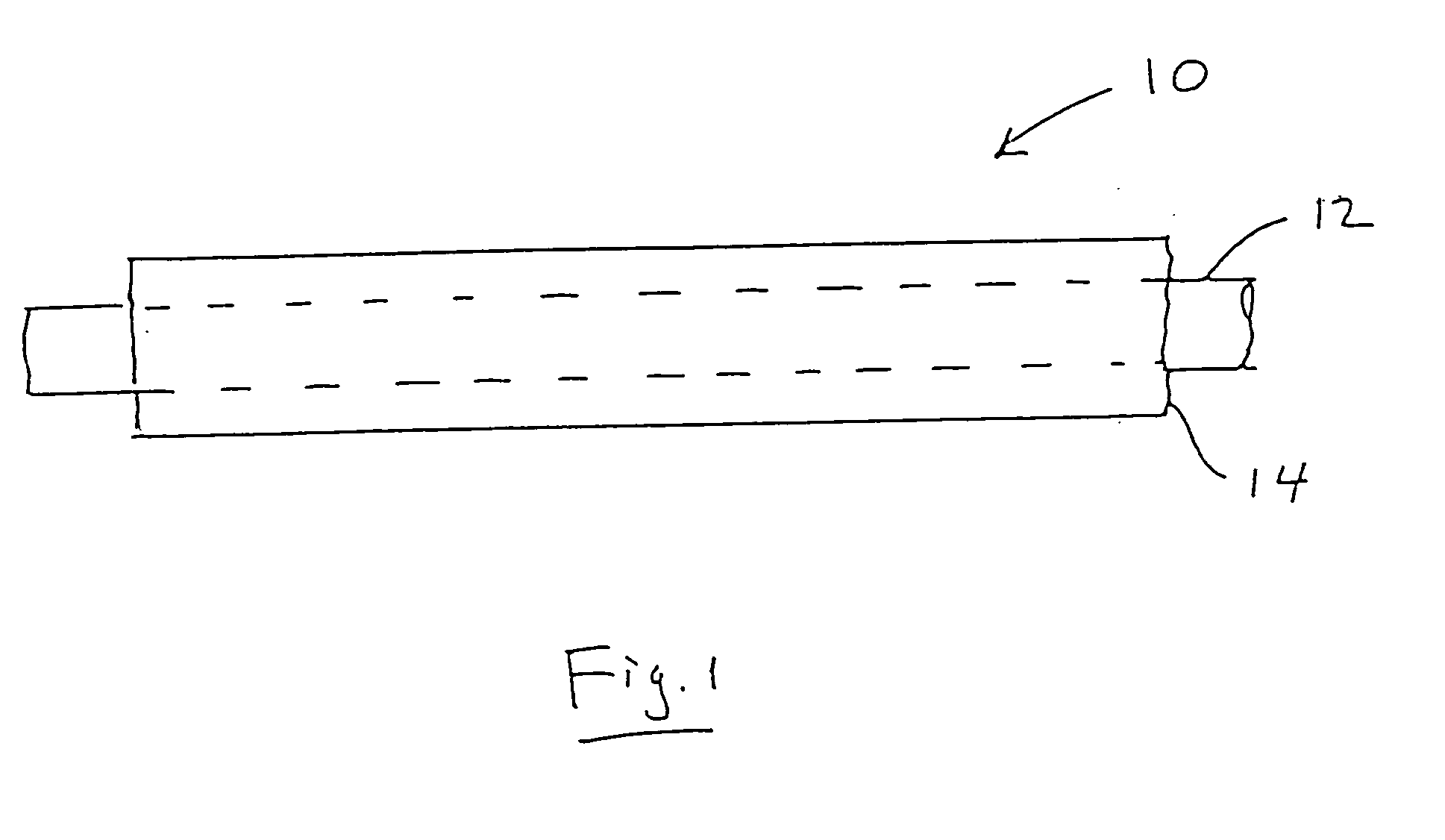Method for coating wire for a musical instrument string, and coated string
a technology for musical instruments and wires, applied in the field of musical instrument strings, can solve the problems of deteriorating tonal qualities and aesthetics of music strings, limited useful life of music strings, and unenvironmental protection of processes, so as to achieve high line speeds, save labor and energy consumption, and improve sound quality.
- Summary
- Abstract
- Description
- Claims
- Application Information
AI Technical Summary
Benefits of technology
Problems solved by technology
Method used
Image
Examples
Embodiment Construction
[0026] The preferred embodiment of the invention is implemented with a one-component, U-V or EB-cured, blocked (ASTM Type 3) formulation, optionally applied in multiple layers. The single or each coating layer is preferably applied in a continuous running process where a long length or strand of wire is dipped into the liquid coating material, then wiped with felts or metering dies that define a die channel just slightly larger than the outside diameter of the wire itself. Quality music strings are very symmetric, and this is achieved with the present invention by use of dies through which the coated wire passes vertically.
[0027] The wire with the sized, pre-cured coating material is passed through a U-V or EB chamber for curing. Each coating layer is applied isotropically, i.e., the coating step itself produces no preferential orientation of molecules, ligaments, strands, or the like. The first or primary layer is applied to a raw wire (i.e., clean, bare, plated or unplated metal)...
PUM
 Login to View More
Login to View More Abstract
Description
Claims
Application Information
 Login to View More
Login to View More - R&D
- Intellectual Property
- Life Sciences
- Materials
- Tech Scout
- Unparalleled Data Quality
- Higher Quality Content
- 60% Fewer Hallucinations
Browse by: Latest US Patents, China's latest patents, Technical Efficacy Thesaurus, Application Domain, Technology Topic, Popular Technical Reports.
© 2025 PatSnap. All rights reserved.Legal|Privacy policy|Modern Slavery Act Transparency Statement|Sitemap|About US| Contact US: help@patsnap.com



